

Higher and foundation tiers
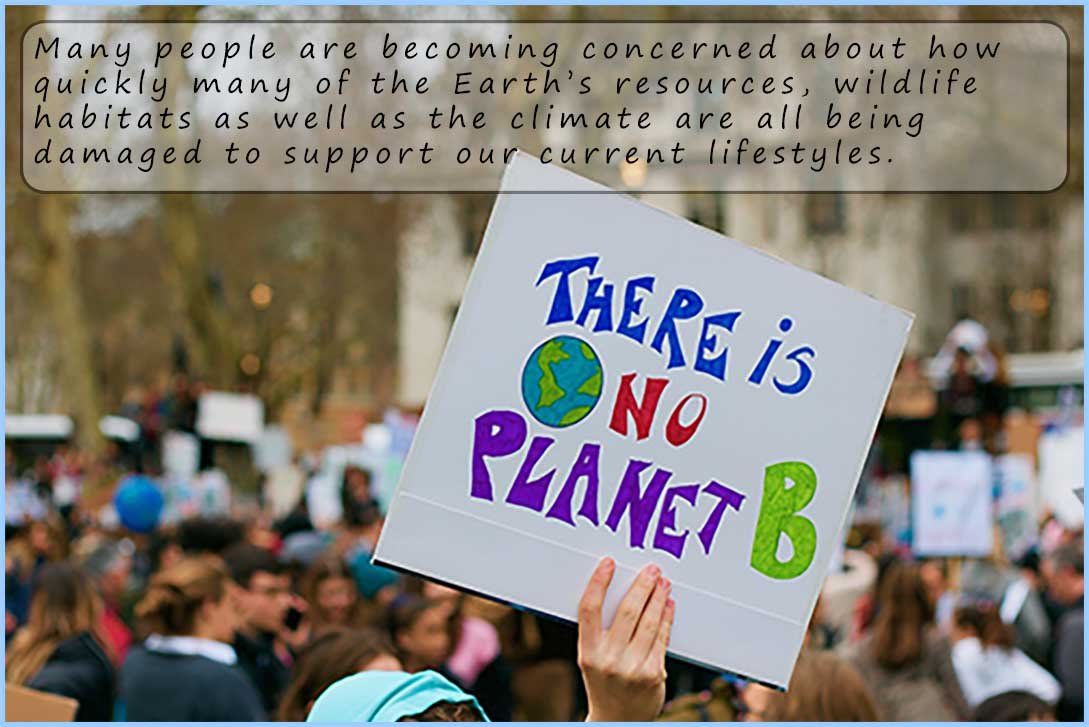 Humans use the natural resources found on Earth to provide warmth, shelter, food and transport. However with a growing
world population, climate emergency and widespread habitat destruction coupled with the demands for ever more new and
improved products many of these finite natural resources; that is resources that we are using at a faster rate than they
can be replaced; are in short supply and many are being used up faster than the planet can sustain.
Many scientists and people are worried about the environmental damage being done by the extraction and use of these
natural resources which is done in a non-sustainable way.
Humans use the natural resources found on Earth to provide warmth, shelter, food and transport. However with a growing
world population, climate emergency and widespread habitat destruction coupled with the demands for ever more new and
improved products many of these finite natural resources; that is resources that we are using at a faster rate than they
can be replaced; are in short supply and many are being used up faster than the planet can sustain.
Many scientists and people are worried about the environmental damage being done by the extraction and use of these
natural resources which is done in a non-sustainable way.
Chemists are constantly developing and improving materials and equipment used in agriculture and industry to make new
products that are produced in a sustainable way; that is one which meets the needs of current generation without
compromising the ability of future generations to meet their own needs.
As an example consider the reliance of our economy on fossil fuels. These provide much of the energy needed for transport, heating and industry. However these naturally produced fuels are a finite resource and are they are being used up much faster than they are being replaced. Many scientists believe that our over use of fossil fuels has also resulted in an increase in atmospheric pollution, caused climate change and the greenhouse effect. However scientists are developing new technologies to replace our reliance on fossil fuels and these new sustainable resources should be able to meet our energy needs in the future.
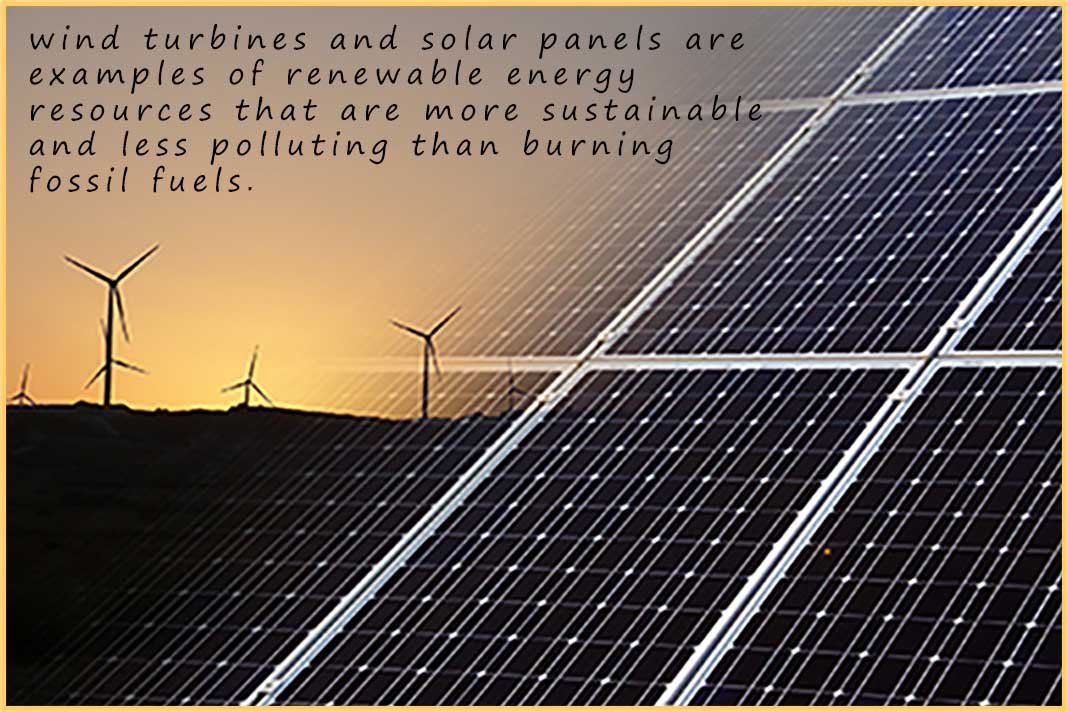 Many scientists believe we are facing a climate emergency and that climate change will have major and serious consequences
for all living things on Earth. Our reliance on fossil fuels (coal, oil and gas), a non-renewable energy source is blamed
for much of the damage being done to our atmosphere and climate. However we have seen in the UK a move away from these
polluting resources and a move towards more sustainable energy resources such as wind power and solar panels. The cost
of solar panels and wind turbines has fallen over the past few years and in the UK it is hoped that off-shore wind could
replace many polluting fossil fuel power stations in the near future. With the development of new materials for solar
cells which increases their efficiency, widespread use of these on our roofs could have a large impact on our carbon
emissions.
Many scientists believe we are facing a climate emergency and that climate change will have major and serious consequences
for all living things on Earth. Our reliance on fossil fuels (coal, oil and gas), a non-renewable energy source is blamed
for much of the damage being done to our atmosphere and climate. However we have seen in the UK a move away from these
polluting resources and a move towards more sustainable energy resources such as wind power and solar panels. The cost
of solar panels and wind turbines has fallen over the past few years and in the UK it is hoped that off-shore wind could
replace many polluting fossil fuel power stations in the near future. With the development of new materials for solar
cells which increases their efficiency, widespread use of these on our roofs could have a large impact on our carbon
emissions.
With a growing population comes increased demand for water, both for human consumption and for industry. However the problems of increased demand for water due to climate change has made it a priority to conserve this limited and life essential resource. Water use can be cut at home by implementing some fairly simple measures such as low flow taps and showers and the use of water efficient appliances such as dishwashers and washing machines. The introduction of water meters can also reduce water consumption but this is not popular with everyone.
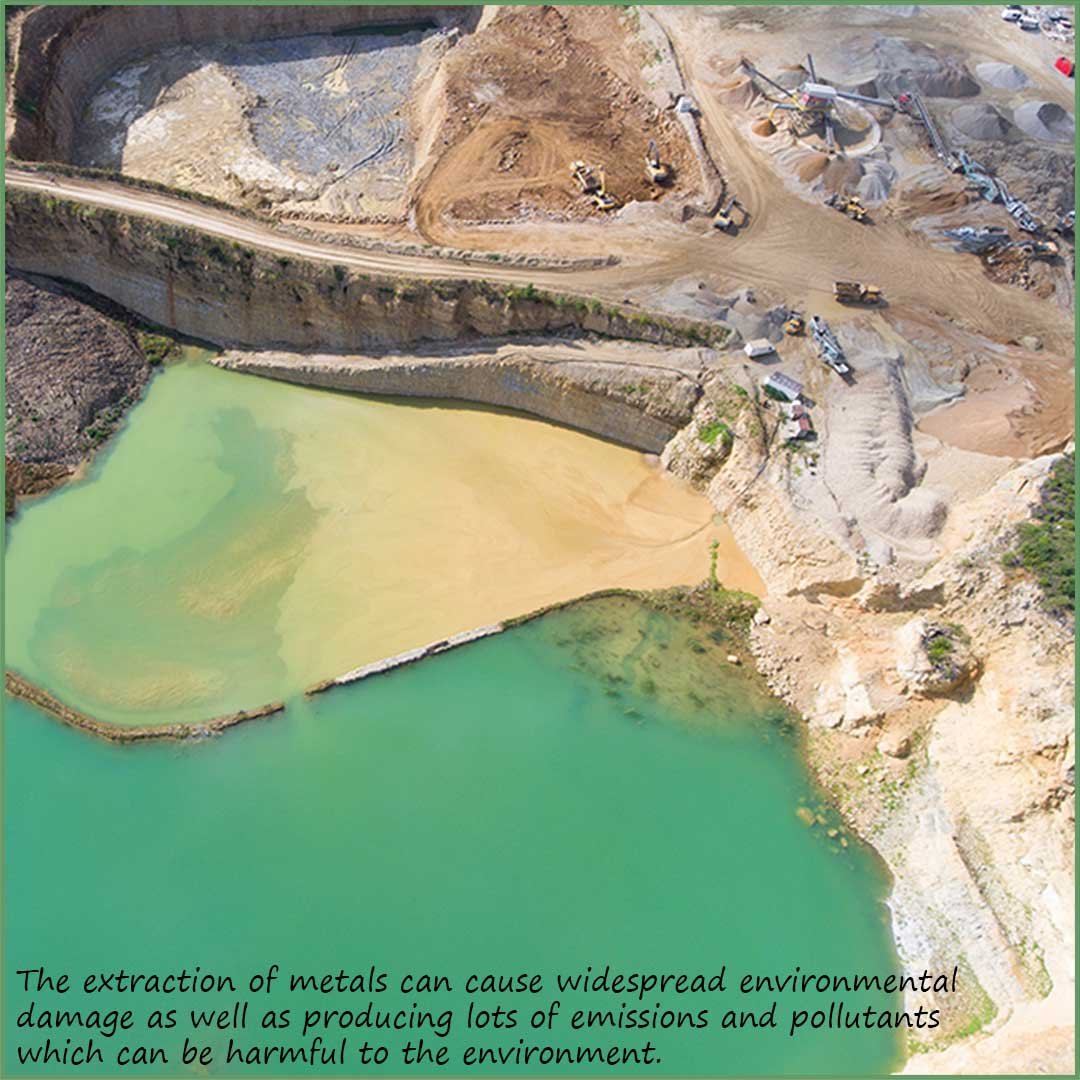 Extracting metals from metal mines is not what you would call environmentally friendly! It uses large amounts of
energy and destroys large areas of land. Recycling metals would reduce the need for these mines and would also use
less energy and reduce the amount of valuable materials being sent to landfill as well as producing less carbon dioxide
and other pollutants.
Extracting metals from metal mines is not what you would call environmentally friendly! It uses large amounts of
energy and destroys large areas of land. Recycling metals would reduce the need for these mines and would also use
less energy and reduce the amount of valuable materials being sent to landfill as well as producing less carbon dioxide
and other pollutants.
As an example consider the metal copper. Copper is a very valuable metal which is in high demand. Most of the world's
high grade
copper ore has been used and so scientists have had to develop methods to extract copper economically from
low grade ores. Using
traditional methods to extract copper
from low grade copper would result in large amounts of this ore having to be dug up and processed to obtain a fairly small amount of copper. This would also
produce a very large amount of waste material that would have to be disposed off and ultimately put somewhere and this
of course would lead to loss of land and habitat as well as incurring financial costs.
Plants have been used for many years to clean up land contaminated with heavy metals such as mercury and lead.
Traditionally the contaminated soil would be simply scooped up by bulldozers and shipped elsewhere for disposal.
This is expensive and polluting. Plants can do a similar job but much more cheaply and in a less polluting and more
environmentally friendly and sustainable way. The plants absorb the heavy metals into their roots and leaves and when
they plants are mature they are simply chopped down, dried and then burned. The ash produced will contain the heavy metal
compounds which can be processed and the metals extracted. Using plants to extract metals like this is called Phytomining.
Phytomining is often used to extract copper from its low grade ores. Here the plants will be grown on top the land containing the metal ore and when the plants are fully grown they will be harvested, dried and burned as described above. The ash maybe dissolved in sulfuric acid to form a solution of copper sulfate. The copper can then be extracted from this solution by electrolysis or by a displacement reaction using scrap iron in a displacement reaction, as shown below.

Certain types of bacteria and fungi can feed on nutrients in metal ores and as a by-product the metal is produced.
The process is very simple and you can even buy kits to do it yourself on the internet! Basically a large hole is dug
in the ground and it is lined with a plastic liner. The ore is placed in the liner. Many of the natural bacteria that
are used require acidic conditions, so the ore is sprayed or soaked with dilute sulfuric acid. Many metals can be
extracted using this method including copper, nickel and uranium as well as many others. This process is very
inexpensive and compared to traditional smelting methods much more environmentally friendly. The downside is that
it is very slow. The diagram below shows just how simple and easy the process is to set-up with no specialist
equipment needed.
The acidic solution which collects at the bottom of the pit is simply collected and the copper extracted by electrolysis or
displacement reactions, similar to that used to extract metals by phytomining.
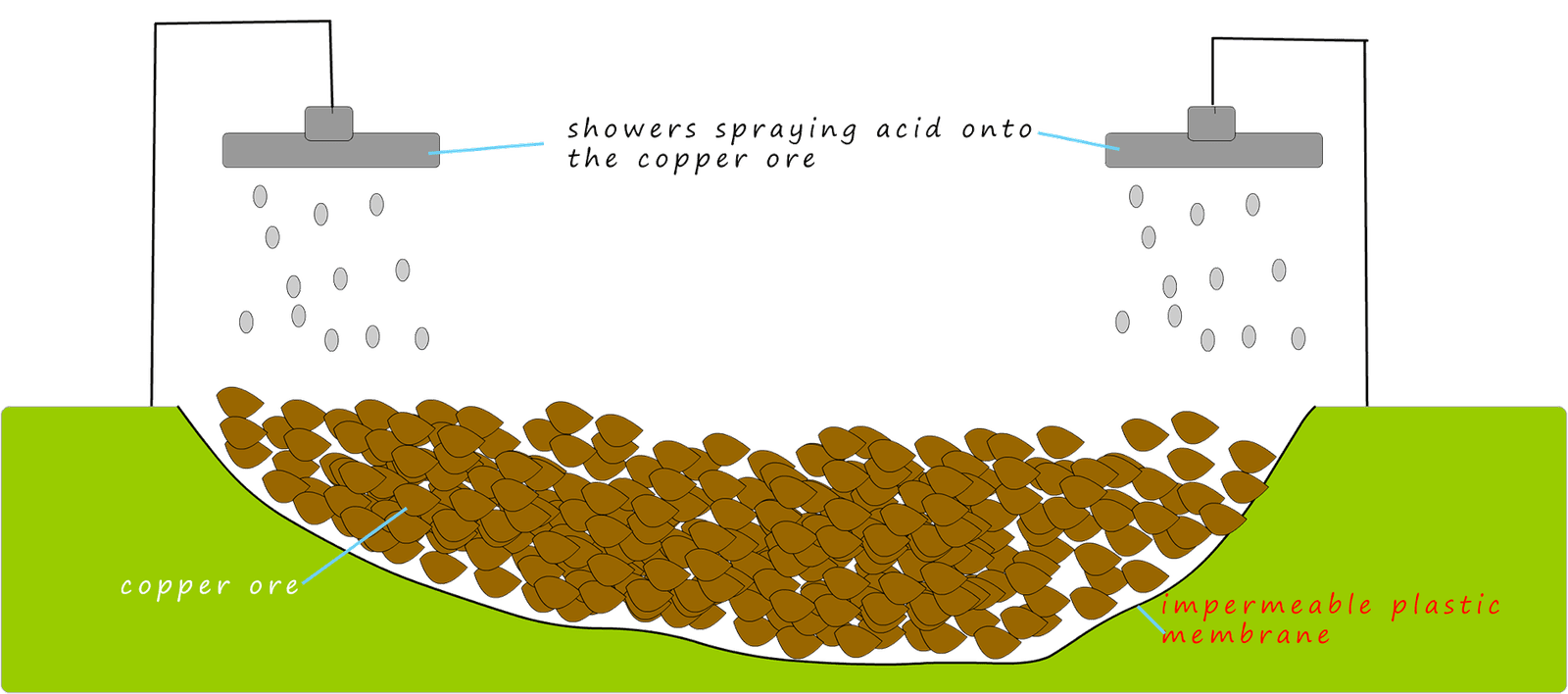
One way to make the Earth's natural resources last longer is to reuse and recycle materials. Metals, glass, clay ceramics and most plastics are made from raw materials which are limited and finite so every effort should be made to reuse and recycle them, not only to save resources but to prevent further environmental damage by extracting more of them and disposing of used items to landfill and also saves energy and produces less greenhouse gases.
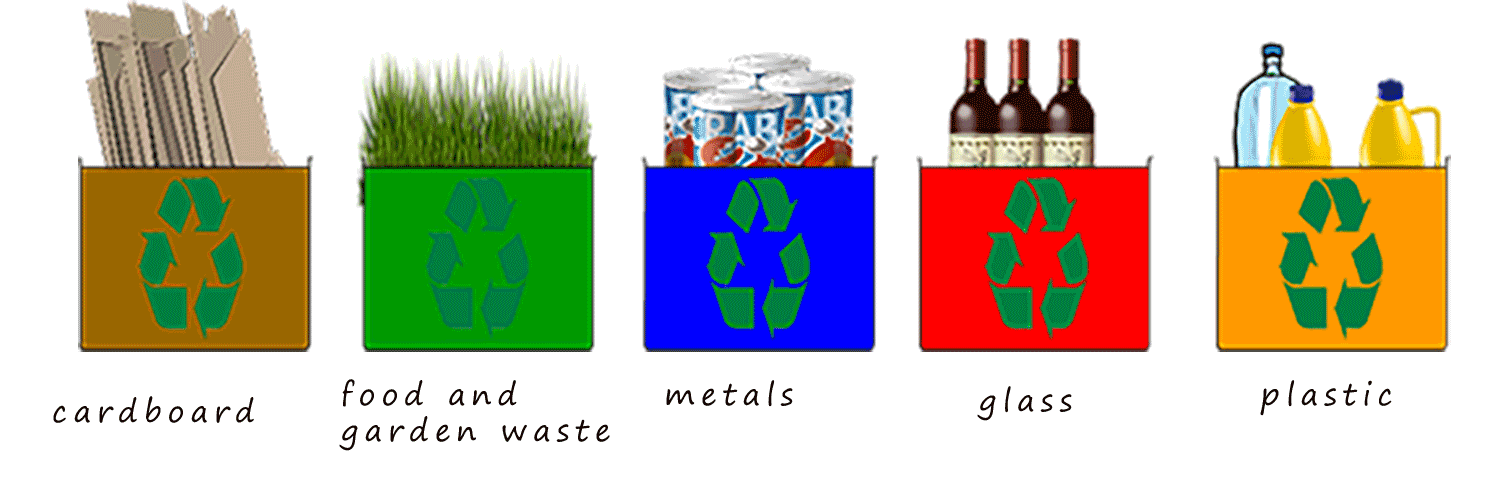
We should recycle as much as possible at home and encourage manufacturers to produce items that are able to be recycled or reused when they reach the end of their life and avoid the use of single use items as much as possible. Some materials such as glass, metals and many plastics can be reused and recycled. Glass bottles can be crushed and melted to make new bottles or other objects made from glass. Metals can be melted and recast or reformed to make new products. Cars, trucks and trains can have as much as 30% recycled metal in them and hopefully in the future this can increase dramatically. Aluminium drinks can are recycled to make new cans, window frames and doors as well as being reused in aircraft manufacture. The fizzy drink can you had today could be travelling the world in a few months as part of the frame of an aircraft! Scrap iron can be added to a blast furnace and reused and then turned into steel for use in car manufacture or other industries e.g. new railway lines now contain a high proportion of recycled steel. The image below shows just a few items that can be recycled.
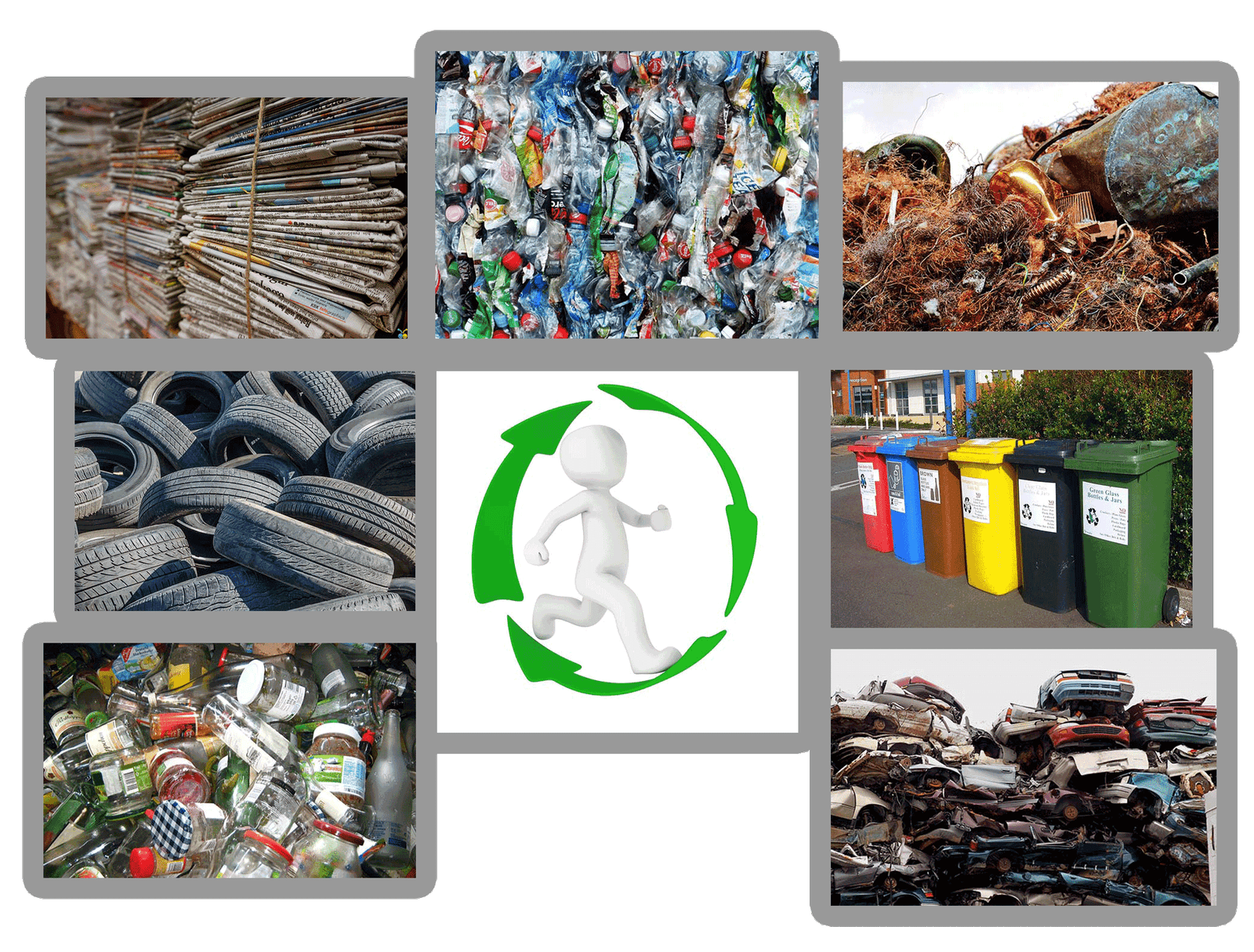 As well as recycling there is much public demand for greener and more environmentally friendly alternatives to single use plastics.
Chemists hare developing new greener plastics which are not only biodegradable but which are also compostable and will
rot down in a matter of months instead of the current situation where plastics made from crude oil can lie in landfill sites for
hundreds of years e.g. you may see farmers spreading polythene sheets over their fields; this polythene acts as a mulch and
helps prevent weeds from growing and also helps keep moisture in the soil. The problem is that polythene is non-biodegradable; however
a new plastic mulch has been developed that will rot down and not harm the soil. This means that the farmer can simply plough
this new mulch into the soil when it is no longer needed. New plant based oils which are also biodegradable and compostable
are being developed for use in car and truck engines. This means that even if the oil leaks or spills into the environment, no
long lasting damage will be done.
As well as recycling there is much public demand for greener and more environmentally friendly alternatives to single use plastics.
Chemists hare developing new greener plastics which are not only biodegradable but which are also compostable and will
rot down in a matter of months instead of the current situation where plastics made from crude oil can lie in landfill sites for
hundreds of years e.g. you may see farmers spreading polythene sheets over their fields; this polythene acts as a mulch and
helps prevent weeds from growing and also helps keep moisture in the soil. The problem is that polythene is non-biodegradable; however
a new plastic mulch has been developed that will rot down and not harm the soil. This means that the farmer can simply plough
this new mulch into the soil when it is no longer needed. New plant based oils which are also biodegradable and compostable
are being developed for use in car and truck engines. This means that even if the oil leaks or spills into the environment, no
long lasting damage will be done.